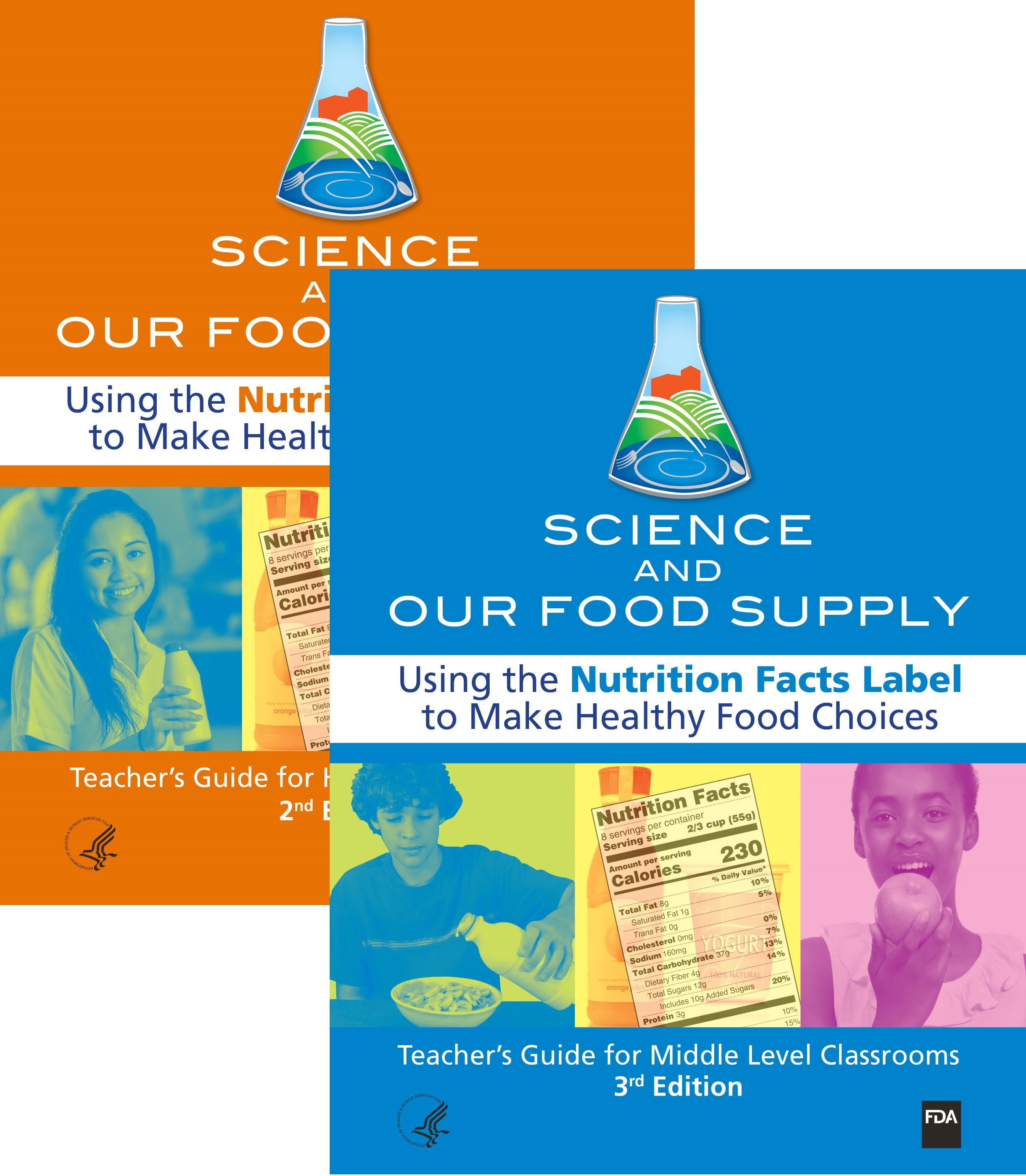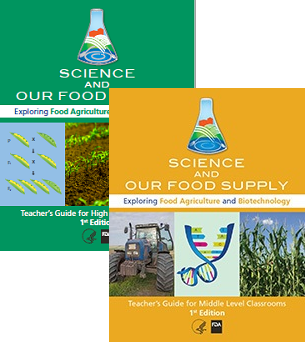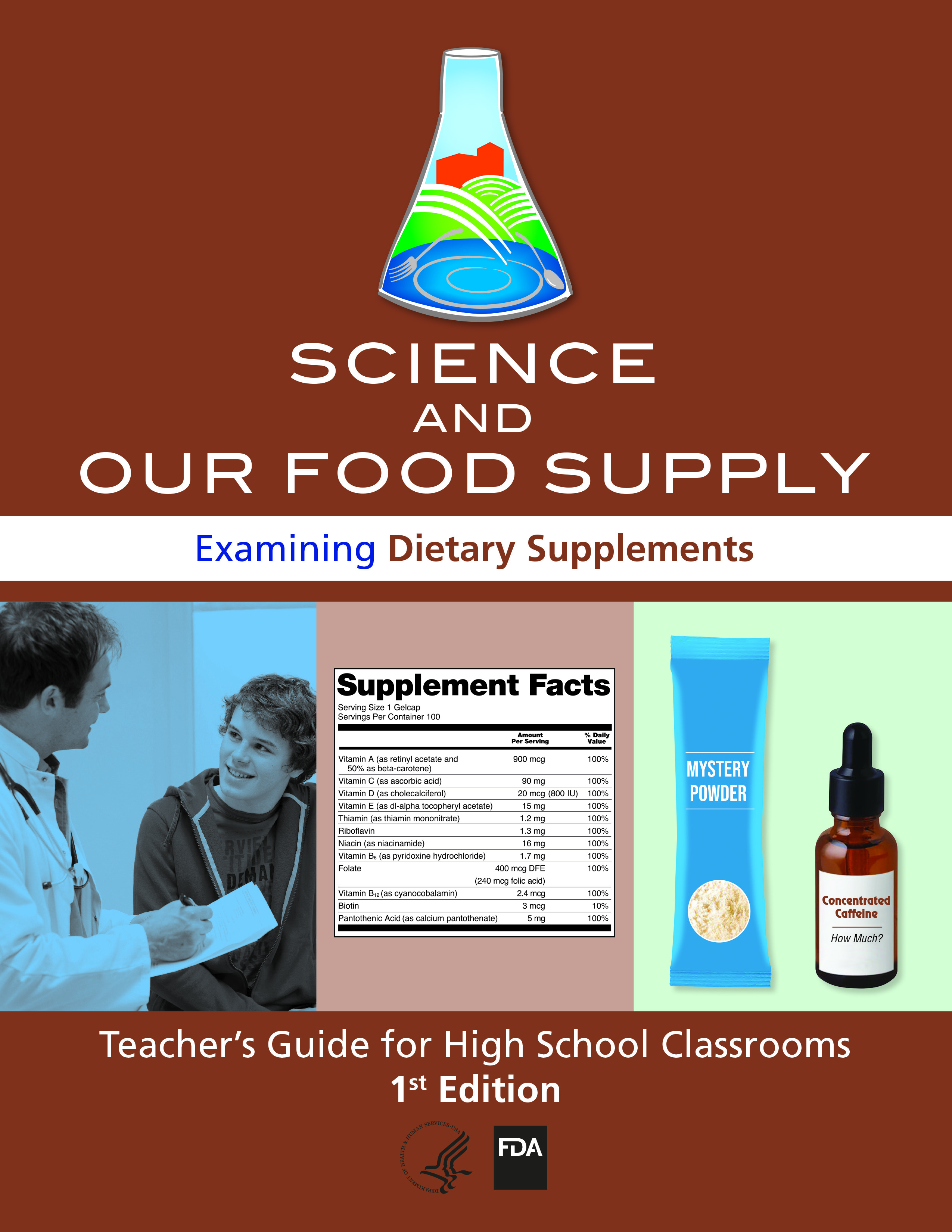
What captures the interest of students? FOOD! Yes, food can be used to engage students in inquiry-based science — really!
The Science and Our Food Supply Teacher Guides are challenging hands-on, minds-on activities that empower students to make informed choices about food safety, nutrition, biotechnology, and dietary supplements. They are crafted in a teacher-friendly modular format that easily fit into science, health, and other classes.
FDA, in collaboration with the National Science Teaching Association (NSTA), created Science and Our Food Supply: Investigating Food Safety from Farm to Table, an innovative, interactive supplementary curriculum for use in middle level and high school science classes. An advisory board of experienced teachers just like you developed and tested the materials.
Food safety has become an important national focus. Each year, approximately one sixth of the U. S. population has mild to severe illnesses caused by pathogens in food — and more than 3,000 people die from them. Learning food safety science will enable your students to better understand decisions and practices that may affect their personal health. It will encourage them to step up to the plate and take an active role in preventing foodborne illness.

This new 2024 edition combines the previous middle and high school Teacher’s Guides into one updated Teacher’s Guide for selection of appropriate lessons that fit each class, regardless of grade level, and it incorporates content from the original Food Safety A-Z Guide into each module’s background information. It also has new food safety lab instruction videos to help teachers and students visualize and carry out the steps of the labs. This curriculum links to current education standards.
In the guide, you’ll find in-depth activities and labs covering this broad range of topics:
Food Safety A to Z Reference Guide
The new 2024 edition of Science and Our Food Supply: Investigating Food Safety from Farm to Table incorporates updated content from the original Food Safety A-Z Guide into the new Teacher’s Guide in each module’s background information.
Access all the current Science and Our Food Supply student activity sheets in a fillable PDF format. These fillable activity sheets support learning on various virtual education platforms and help reduce paper use.
So you want to be a scientist? Learn all about what it takes to make it happen by checking out these exciting interviews! Professionals working in a variety of food safety careers tell all about their jobs and scientific discoveries, and reveal their secrets for success.
Learn key concepts and student activities from individual topics in the Science and Our Food Supply series in an interactive course that awards 1 CEU per 10-hour course for eligible middle and high school teachers.

When it comes to making science, consumer sciences, and health relevant for your students, what better way than to apply it to something that’s part of their everyday lives? Food gives you an ideal springboard for introducing the science that is at the heart of nutrition and exploring the impact that daily food and beverage choices can have on overall health.
This nutrition-based curriculum introduces students to the fundamentals of healthy food choices, using the Nutrition Facts label as the starting point, and may be used separately or in conjunction with the food safety curriculum. With engaging hands-on activities, students will become aware of calories, serving size, and the nutrients to get “more of” and “less of.” Designed for use by middle level and high school teachers, the emphasis is on an inquiry approach that is customizable to science, health, and/or family and consumer science classes, aligning with current education standards in these curriculum areas.
Your students will learn about:

Food agriculture is a topic of great interest to farmers, consumers, scientists, educators, and many people of all ages. After all, all people and animals eat. Science and Our Food Supply: Exploring Food Agriculture and Biotechnology introduces science-based agricultural concepts of crop characteristics, planning, and selection. This new curriculum introduces selective breeding and a subset of techniques commonly referred to as genetic engineering (GE). GE techniques allow scientists to specifically modify DNA of a microorganism, plant, or animal in order to achieve a desired trait. For example, genetic engineering can be used to add one or more genes to an organism to confer a trait the organism does not have or to modify a trait already existing in the organism (increasing or decreasing the expression of a particular trait).
Safe and nutritious food is the foundation of good health, and people in the United States have more food choices than ever before. Several of these choices are due to continuously improving technologies in food agriculture. Many people want to know more about how their food is produced so they can make the right choices for themselves. Science and Our Food Supply: Exploring Food Agriculture and Biotechnology aims to empower you and your students to make those choices. It incorporates key scientific knowledge and education resources to help students understand how biotechnology is used to produce food for humans and animals.
Your students will learn about:

Millions of Americans take dietary supplements, and that number continues to rise. However, dietary supplement labeling can be confusing or misleading. Teens are particularly vulnerable targets for misunderstanding what dietary supplements are and are often unaware of the potential benefits and adverse effects they can have on their bodies. This curriculum is designed to empower students to evaluate the accuracy and credibility of information they see and hear about dietary supplements.
As dietary supplements attract interest among American teenagers who are struggling with perceived or real weight issues, or striving to enhance their sports performance or overall appearance, it is important that students have the right educational tools to help them understand whether to use a particular dietary supplement. The content and activities in Science and Our Food Supply: Examining Dietary Supplements are designed to intrigue and stimulate student curiosity and help them to make healthy decisions.
In-depth information and activities covering: